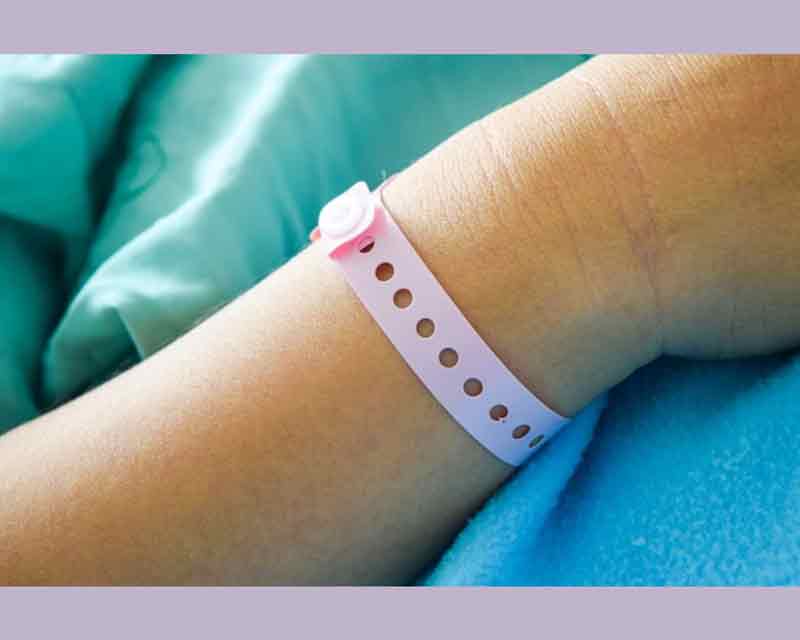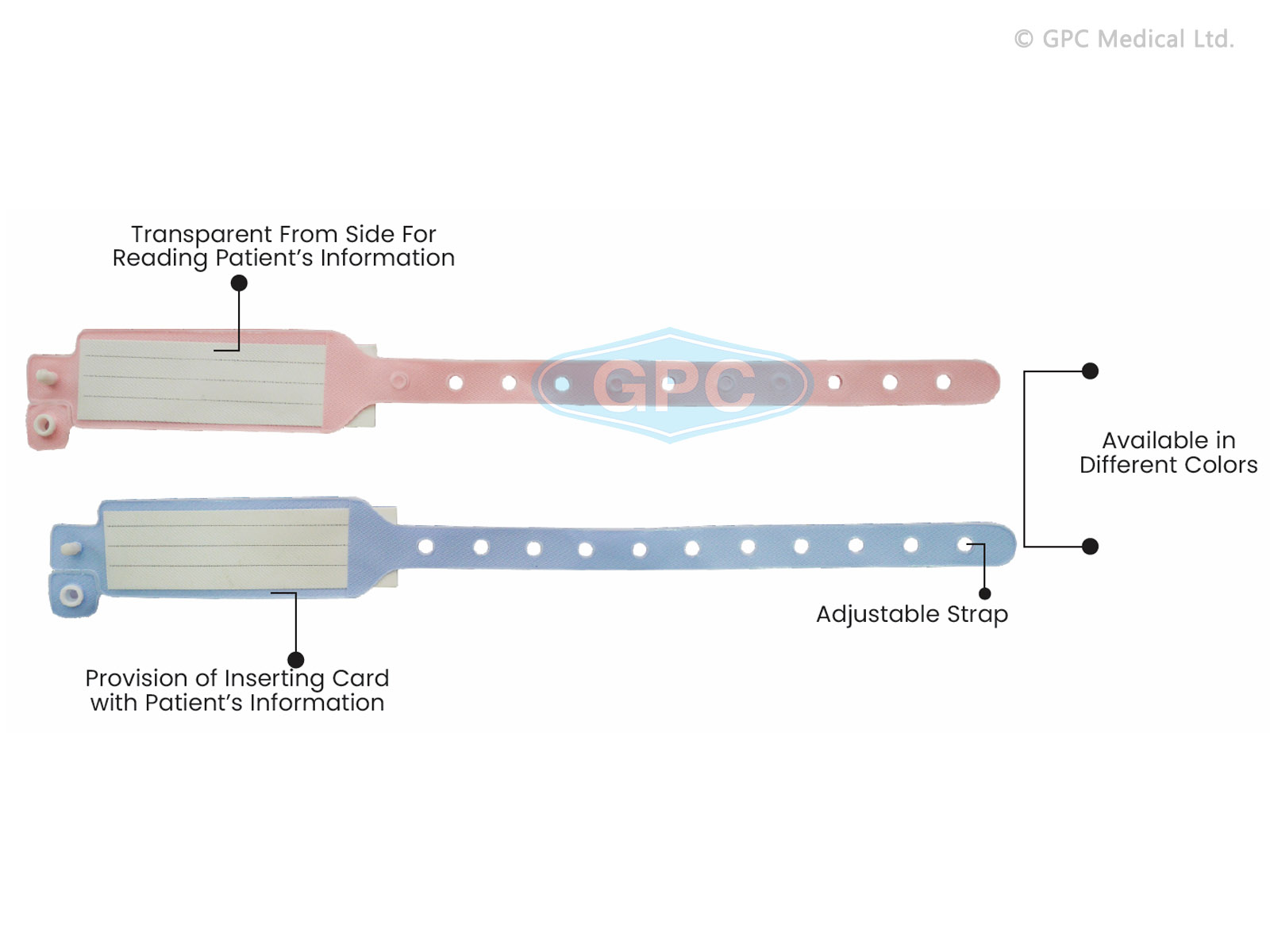The Significance of Using a Patient Identification Band in Current Medical Practices
Exploring the Different Sorts Of Patient Identification Band Utilized in Medical Facilities
In the detailed globe of healthcare, the essential duty of Patient Identification bands frequently goes undetected. These bands, varying from simple paper wristbands to innovative RFID bands, form the backbone of Patient safety and security procedures, making certain accuracy in Patient Identification. The huge variety of these bands, each with its special benefits and constraints, is often neglected. As we navigate through this topic, one may gain insight into the subtle complexities and crucial significance of such bands in medical facilities.
Understanding the Importance of Patient Identification Bands
While they might look like simple devices, Patient Identification bands play an important role in medical centers. These bands act as a crucial tool for confirming Patient identity, preventing clinical errors connected to misidentification. The bands commonly present necessary details such as the Patient's name, age, blood type, and any kind of well-known allergic reactions. They allow medical care specialists to rapidly access this important information, therefore assisting in prompt and exact medical therapy. Patient Identification bands additionally help in streamlining administrative tasks, guaranteeing exact record-keeping and invoicing. Despite their simpleness, these bands embody the principle of Patient security, a foundation of high quality healthcare. Without them, the threat of medical errors, and subsequently, Patient harm, may considerably boost.
Conventional Paper Wristbands: Their Usage and Limitations
Standard paper wristbands have actually been a staple in Patient Identification across numerous medical centers. While their usage prevails, they nurture certain limitations that may affect their efficiency in Patient monitoring. This area will certainly focus on the scope of their application and the integral drawbacks related to their use.
Paper Wristbands: Usage Extent
In the realm of Patient Identification, paper wristbands have long held a crucial function. These bands are normally made use of in outpatient settings, where the Patient's stay is momentary. In spite of advancements in innovation, the modest paper wristband remains a reliable and cost-effective service for Patient Identification in numerous medical care situations.
Limitations of Paper Wristbands
Despite their widespread usage, paper wristbands are not without their drawbacks. Their physical sturdiness is among the significant restrictions. Direct exposure to water, sweat, or harsh handling can make them unreadable and even create them to break down. On top of that, paper wristbands often do not have the technological capabilities of even more contemporary choices, such as barcoding or RFID chips, limiting their performance to just presenting written details. The lack of ability to update or customize the data on the wristband is an additional drawback. If the details is transcribed, legibility can be jeopardized, leading to potential misidentification. Paper wristbands can create pain or skin irritation to some individuals, specifically when worn for extensive periods.
Barcoded Wristbands: Advancements in Patient Identification
While Patient Identification has actually long been a crucial facet of health care, the introduction of barcoded wristbands symbolizes a significant leap forward. These bands leverage the simplicity of barcoding modern technology, permitting Patient info to be quickly checked and accessed. They enhance the speed and precision of Patient Identification, lowering the risk of medical errors connected to misidentification. Barcoded wristbands are cost-effective, simple to generate, and remove handwriting mistakes common with hands-on systems. However, they are not without restrictions. While they supply improvements over click this link conventional bands, the barcode can come to be smudged or used, providing it unreadable. Despite this, barcoded wristbands stay an essential device in contemporary health care setups, symbolizing the crossway of modern technology and Patient care.
Radio Regularity Identification (RFID) Bands: a Step In The Direction Of Futuristic Health Care
The development of Patient Identification bands has produced the emergence of Radio Regularity Identification (RFID) Bands (patient identification band). These innovative devices present key advantages for health care centers, providing a more efficient and technically advanced means of Patient Identification. The execution of RFID in health care is a substantial action in the direction of a more futuristic approach to Patient management and safety and security
Comprehending RFID Bands

RFID Bands: Key Benefits
Mostly, these bands improve Patient security by offering exact, instant Identification, therefore decreasing clinical mistakes. RFID bands can store a large quantity of Patient information, including medical history and allergic reactions, allowing personalized treatment. In general, RFID bands represent a significant development in Patient Identification modern technology, benefiting both people and medical care providers.
Carrying Out RFID in Healthcare
These bands offer a seamless way to track and determine clients, guaranteeing their safety and enhancing effectiveness in therapy procedures. RFID bands reduce clinical mistakes by giving exact Patient Identification, which is important in preventing misdiagnosis or incorrect medication management. Thus, the execution of RFID bands is a substantial step towards improving Patient safety and health care distribution.

Color-Coded Wristbands: Helping in Quick and Accurate Diagnosis
In the busy setting of a clinical facility, color-coded wristbands have emerged as vital tools for swift and accurate Identification of a client's clinical problem. These wristbands, used by patients, carry particular colors that represent different clinical problems or read the full info here statuses. Red might show allergic reaction threats, while yellow may indicate a loss risk. This system is developed to offer prompt visual signs to doctor, enhancing Patient safety and care quality. In emergency situations, making use of these wristbands enables rapid decision-making. Nonetheless, the effectiveness of color-coded wristbands depends on the harmony of color analysis throughout healthcare establishments, needing typical standards for consistent application.
Strategies for Efficient Execution and Monitoring of Patient ID Bands
Attaining optimum usage of Patient Identification bands requires a well-structured technique for their implementation and management. The very first step includes training all health and wellness employees on the importance of correctly using and reading these bands. Second of all, health centers ought to standardize the use of ID Recommended Site bands throughout all departments, guaranteeing harmony and lowering inconsistencies. Normal audits needs to be conducted to validate adherence to plans and to fix any kind of disparities. Patient education and learning is likewise vital; people should understand the objective of the bands and the requirement for their consistent wear. patient identification band. Finally, it's necessary to have a back-up plan in position, such as barcode scanning or biometrics, to make certain that Patient Identification is never jeopardized.
Verdict
Patient Identification bands are critical in clinical centers to make certain security and precision. Conventional paper, barcoded, RFID, and color-coded wristbands each hold distinct advantages, ranging from cost-effectiveness to advanced information storage space and immediate medical signals. Reliable implementation and administration of these bands can significantly reduce clinical errors, increase effectiveness, and enhance overall Patient care. Therefore, understanding and using these Identification devices is critical for maintaining high standards in medical care.
These bands, differing from straightforward paper wristbands to sophisticated RFID bands, develop the foundation of Patient safety protocols, making certain accuracy in Patient Identification.The advancement of Patient Identification bands has actually brought concerning the emergence of Radio Frequency Identification (RFID) Bands. In general, RFID bands stand for a significant improvement in Patient Identification modern technology, benefiting both patients and health care carriers.
RFID bands lower clinical errors by supplying exact Patient Identification, which is crucial in stopping misdiagnosis or incorrect medication administration. Patient education is additionally critical; clients have to comprehend the function of the bands and the requirement for their consistent wear.